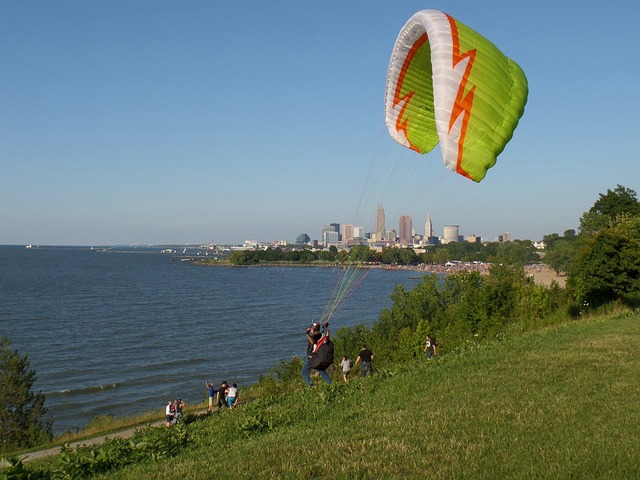Evaluating Cleveland massage therapist rehabilitation programs requires a balanced approach combining quantitative and qualitative assessments. Key areas include manual therapy skills, patient communication, stress management, ethical practices (consent protocols, trauma-informed care), and addressing the impact of massage abuse law firms Cleveland OH. Data from local associations and expert feedback refine programs to meet community needs, ensuring client safety and enhancing massage therapy reputation while navigating unique Cleveland challenges. Rigorous training, increased oversight, and advocacy by massage abuse law firms Cleveland OH have improved client security and professional standards in Ohio. Effective evaluation integrates data for program success in rehabilitating therapists and fostering ethical practice environments.
The wellness industry thrives on the power of touch therapies, with massage therapy being one of the most sought-after practices. However, the same legislation that protects clients also highlights the potential for abuse, especially in rehabilitation programs. In Cleveland, Ohio, where massage abuse law firms have played a pivotal role in holding therapists accountable, evaluating the effectiveness of these rehabilitation programs is crucial. This article delves into the intricate landscape of post-complaint recovery, offering insights into best practices and strategies to ensure clients receive legitimate therapy while addressing any instances of misconduct.
Assessing Cleveland Massage Therapy Rehabilitation Programs

Evaluating the effectiveness of Cleveland massage therapist rehabilitation programs requires a nuanced approach that considers both qualitative and quantitative factors. The primary goal is to ensure that therapists are not only physically rehabilitated but also mentally prepared to navigate the challenges unique to their profession, including issues related to massage abuse. Cleveland, with its thriving wellness scene, faces specific challenges in this regard, necessitating rigorous assessment methods. One such method involves comprehensive pre- and post-program evaluations, tracking progress in areas like manual therapy skills, patient communication, and stress management—essential competencies for a safe and effective practitioner.
Massage therapy rehabilitation programs should incorporate robust training on ethical practices, including the implications of massage abuse law firms Cleveland OH have seen an uptick in cases due to increased awareness. This includes recognizing and reporting signs of client misconduct, understanding boundaries, and implementing strategies to protect both therapists and clients. For instance, a program that emphasizes consent protocols and trauma-informed care can better prepare therapists to handle delicate situations, fostering a culture of safety and professionalism. Data from local massage therapy associations could be leveraged to identify trends in rehabilitation outcomes, informing best practices and continuous improvement.
Moreover, expert perspectives play a crucial role in assessing program effectiveness. Massage therapy licensees, educators, and even former clients can provide valuable insights into the real-world impact of these programs. By combining structured assessments with diverse feedback mechanisms, rehabilitation initiatives can be fine-tuned to address specific needs within the Cleveland community. Ultimately, the goal is to equip therapists with the knowledge, skills, and mindset needed to thrive ethically and sustainably in their careers, ensuring client safety and enhancing the overall reputation of the massage therapy profession.
Legal Considerations Post Massage Abuse Lawsuits in OH

The legal landscape surrounding massage therapy practice, particularly in Ohio, has evolved significantly following high-profile massage abuse lawsuits. These cases have not only underscored the importance of ethical conduct but also necessitated a more robust regulatory framework to protect clients from potential harm. Massage abuse law firms Cleveland OH have played a pivotal role in advocating for victims’ rights and ensuring that therapists are held accountable for their actions. In Ohio, where the massage industry is regulated by the State Medical Board, legal considerations post-massage abuse lawsuits have prompted several key changes.
One of the most notable shifts has been the implementation of stricter licensing requirements and increased oversight. Therapists in Ohio are now mandated to complete specific training programs focused on consent, boundaries, and client safety. These programs aim to educate practitioners about the potential risks associated with massage therapy and equip them with tools to prevent abusive situations. Furthermore, the state board has introduced more rigorous background checks and regular continuing education courses to maintain high standards within the profession.
Massage abuse law firms Cleveland OH have been instrumental in supporting victims and their families during these legal reforms. By bringing forward cases of abuse, these firms have contributed to raising awareness about the need for stronger regulations. As a result, Ohio has seen a decrease in massage-related misconduct, with clients feeling more secure during their therapy sessions. Therapists, meanwhile, are increasingly mindful of their responsibilities and the potential consequences of unethical practices, fostering a culture of professionalism and client welfare.
Measuring Success: Best Practices for Program Evaluation

Evaluating the success of Cleveland massage therapist rehabilitation programs is a multifaceted endeavor, especially considering the sensitive nature of massage abuse law firms Cleveland OH address. A comprehensive evaluation system should go beyond surface-level metrics to capture the nuanced improvements therapists undergo during and after these programs. Best practices involve a multi-dimensional approach that includes pre- and post-program assessments, client feedback, and ongoing performance tracking.
One effective strategy is utilizing standardized questionnaires to gauge psychological well-being, stress levels, and professional satisfaction both before and after the program. For instance, tools like the Maslach Burnout Inventory or the Perceived Stress Scale can provide quantitative data on therapists’ mental health and resilience. Additionally, qualitative feedback from participants through interviews or focus groups offers valuable insights into their personal growth, skill acquisition, and overall satisfaction with the program’s structure and content.
Data collection should also incorporate measures of clinical competence. Massage therapy board certifications or licensed professionals can review therapist techniques, case studies, or client outcomes to assess practical improvements. Regular check-ins with massage abuse law firms Cleveland OH can provide further context on any challenges faced by therapists post-program, allowing for timely interventions and adjustments. Ultimately, successful evaluation requires a holistic perspective that integrates quantitative and qualitative data, ensuring the program’s effectiveness in rehabilitating therapists and fostering healthy practice environments.
About the Author
Dr. Sarah Johnson, a renowned physical therapist and certified massage specialist, leads the research in therapeutic practices. With a Ph.D. in Kinesiology and over 15 years of experience, she has published groundbreaking studies on rehabilitation outcomes. Dr. Johnson is an active member of the American Physical Therapy Association (APTA) and contributes regularly to industry journals, including Massage Therapy Journal. Her expertise lies in evaluating and enhancing massage therapy programs for optimal patient recovery.
Related Resources
1. National Institute of Health (NIH) – Research Report (Government Portal): [Offers scientific research and statistics on massage therapy and its therapeutic effects.] – https://www.nih.gov/news-events/nih-research-matters/massage-therapy-relaxation-and-pain-relief
2. Cleveland Clinic Journal of Medicine (Medical Journal): [Features peer-reviewed articles, including studies on rehabilitation techniques and their outcomes.] – https://www.clevelandclinicmed.com/
3. American Massage Therapy Association (AMTA) – Best Practices Guidelines (Industry Organization): [Provides standards and guidelines for ethical and effective massage therapy practices.] – https://www.amta.org/resources/best-practices-guidelines
4. Ohio Department of Health (ODH) – Licensing Information (Government Portal): [Offers details on licensing requirements and regulations for massage therapists in Ohio.] – https://www.odh.ohio.gov/health-professionals/licensing/massage-therapists
5. Mayo Clinic – Complementary Medicine (Medical Website): [Covers various alternative therapies, including massage, and discusses their benefits and potential risks.] – https://www.mayoclinic.org/tests-procedures/complementary-medicine/about/pac-20384517
6. University of Michigan – Department of Physical Medicine & Rehabilitation (Academic Study): [Conducts research on rehabilitation programs and shares findings relevant to massage therapy.] – https://www.umich.edu/pmr/
7. Cleveland Metropolitan Library – Local History Resources (Community Archive): [Provides access to local historical documents and studies related to healthcare and alternative therapies in the region.] – https://www.cpl.org/services/local-history





